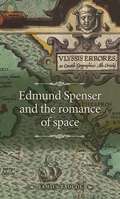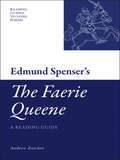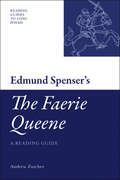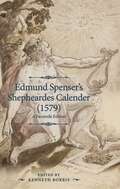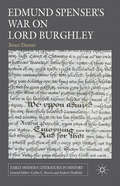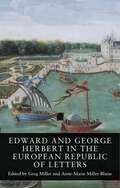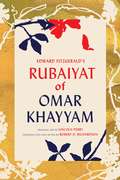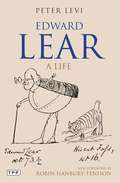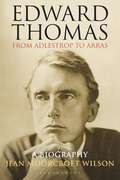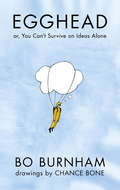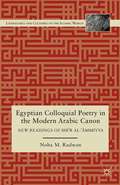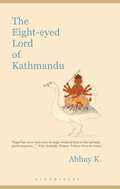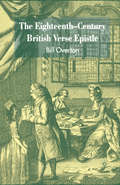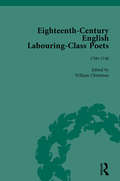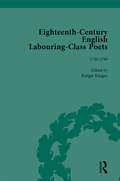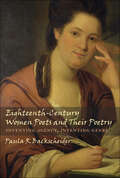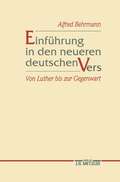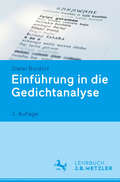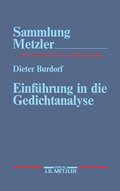- Table View
- List View
Edmund Spenser and the romance of space (The Manchester Spenser)
by Tamsin BadcoeEdmund Spenser and the romance of space advances the exploration of literary space into new areas, firstly by taking advantage of recent interdisciplinary interests in the spatial qualities of early modern thought and culture, and secondly by reading literature concerning the art of cosmography and navigation alongside imaginative literature with the purpose of identifying shared modes and preoccupations. The book looks to the work of cultural and historical geographers in order to gauge the roles that aesthetic subjectivity and the imagination play in the development of geographical knowledge: contexts ultimately employed by the study to achieve a better understanding of the place of Ireland in Spenser’s writing. The study also engages with recent ecocritical approaches to literary environments, such as coastlines, wetlands, and islands, thus framing fresh readings of Spenser’s handling of mixed genres.
Edmund Spenser and the romance of space (The Manchester Spenser)
by Tamsin BadcoeEdmund Spenser and the romance of space advances the exploration of literary space into new areas, firstly by taking advantage of recent interdisciplinary interests in the spatial qualities of early modern thought and culture, and secondly by reading literature concerning the art of cosmography and navigation alongside imaginative literature with the purpose of identifying shared modes and preoccupations. The book looks to the work of cultural and historical geographers in order to gauge the roles that aesthetic subjectivity and the imagination play in the development of geographical knowledge: contexts ultimately employed by the study to achieve a better understanding of the place of Ireland in Spenser’s writing. The study also engages with recent ecocritical approaches to literary environments, such as coastlines, wetlands, and islands, thus framing fresh readings of Spenser’s handling of mixed genres.
Edmund Spenser's 'The Faerie Queene': A Reading Guide
by Andrew ZurcherThis Guide will help new readers to understand and enjoy The Faerie Queene, drawing attention to its various ironies, its self-reflexive construction, its visual emphasis and the timeless ethical, political, and literary questions that it asks of all of us. The book includes key selections from the poem (each accompanied by a headnote, commentary and glosses), historical and critical discussions, teaching and learning plans and a guide to further resources in electronic and print media
Edmund Spenser's 'The Faerie Queene': A Reading Guide (Reading Guides to Long Poems)
by Andrew ZurcherIntroduces a Renaissance masterpiece to a modern audience.
Edmund Spenser's Shepheardes Calender: An analyzed facsimile edition (The Manchester Spenser)
by Joshua Samuel ReidSpenser’s extraordinary Shepheardes Calender as first printed in 1579 is arguably the seminal book of the Elizabethan literary renaissance. This volume reassesses it as a material text in relation to book history, and provides the first clearly detailed facsimile of the 1579 Calender available as a book. The author reconsiders the original book’s development, production, design, and particular characteristics, and demonstrates both its correlations with diverse precursors in print and its significant departures. Numerous illustrations of archival sources facilitate comparison. By reinvestigating the 1579 Calender’s twelve pictures, he shows that Spenser himself probably designed them, that they involve complex symbolism, and that this book’s meaning is thus profoundly verbal-visual. An Analysed Facsimile is an essential new resource for study of Spenser’s Calender, Spenser, Elizabethan print and poetics, and early modern English literary history.
Edmund Spenser's Shepheardes Calender: An analyzed facsimile edition (The Manchester Spenser)
by Joshua Samuel ReidSpenser’s extraordinary Shepheardes Calender as first printed in 1579 is arguably the seminal book of the Elizabethan literary renaissance. This volume reassesses it as a material text in relation to book history, and provides the first clearly detailed facsimile of the 1579 Calender available as a book. The author reconsiders the original book’s development, production, design, and particular characteristics, and demonstrates both its correlations with diverse precursors in print and its significant departures. Numerous illustrations of archival sources facilitate comparison. By reinvestigating the 1579 Calender’s twelve pictures, he shows that Spenser himself probably designed them, that they involve complex symbolism, and that this book’s meaning is thus profoundly verbal-visual. An Analysed Facsimile is an essential new resource for study of Spenser’s Calender, Spenser, Elizabethan print and poetics, and early modern English literary history.
Edmund Spenser's War on Lord Burghley (Early Modern Literature in History)
by B. DannerEdmund Spenser's censored attacks on Lord Burghley (Elizabeth I's powerful first minister) serve as the basis for a reassessment of the poet's mid-career, challenging the dates of canonical texts, the social and personal contexts for scandalous topical allegories, and the new historicist portrait of Spenser's 'worship' of power and state ideology.
Educating the Romantic Poets: Life and Learning in the Anglo-Classical Academy, 1770-1850 (Romantic Reconfigurations: Studies in Literature and Culture 1780-1850 #17)
by Catherine E. RossEducating the Romantic Poets: Life and Learning in the Anglo-Classical Academy, 1770-1850 explores how the public and endowed grammar schools and the colleges of Oxford and Cambridge trained some of the most important writers, critics, and public figures of the Romantic period. These institutions are recognized here as intentional partners and are discussed collectively as the “Anglo-classical academy”. The book shows how they not only schooled students in “classics, maths, and divinity” but also in accepted social behaviours, cultural values, political beliefs, and literary tastes. In so doing, this academy gave shape to the literature and spirit of the age. By discussing the schools and the universities together and by focusing upon pedagogies and daily life as well as the texts and topics studied, this book shows as no other has done how writers and readers of the late eighteenth and early nineteenth centuries became such fluent linguists, skilled prosodists, and perceptive critics. As each chapter explores and comments upon the relational, intellectual, and cultural aspects of the Anglo-classical educational experience, it directs readers’ attention to the ways in which this information can be used to reread texts, reassess certain Romantics’ literary careers, and launch new lines of research.
Edward and George Herbert in the European Republic of Letters (Seventeenth- and Eighteenth-Century Studies #18)
by Greg Miller and Anne-Marie Miller-BlaiseGeorge Herbert (1593-1633), the celebrated devotional poet, and his brother Lord Herbert of Cherbury (1583-1648), often described as the father of English deism, are rarely considered together. This collection explores connections between the full range of the brothers’ writings and activities, despite the apparent differences both in what they wrote and in how they lived their lives. More specifically, the volume demonstrates that despite these differences, each conceived of their extended republic of letters as militating against a violent and exclusive catholicity; theirs was a communion in which contention (or disputation) served to develop more dynamic forms of comprehensiveness. The literary, philosophical and musical production of the Herbert brothers appears here in its full European context, connected as they were with the Sidney clan and its investment in international Protestantism.The disciplinary boundaries between poetry, philosophy, politics and theology in modern universities are a stark contrast to the deep interconnectedness of these pursuits in the seventeenth century. Crossing disciplinary and territorial borders, contributors discuss a variety of texts and media, including poetry, musical practices, autobiography, letters, council literature, orations, philosophy, history and nascent religious anthropology, all serving as agents of the circulation and construction of transregionally inspired and collective responses to human conflict and violence. We see as never before the profound connections, face-to-face as well as textual, linking early modern British literary culture with the continent.
Edward and George Herbert in the European Republic of Letters (Seventeenth- and Eighteenth-Century Studies #18)
by Greg Miller Anne-Marie Miller-BlaiseGeorge Herbert (1593-1633), the celebrated devotional poet, and his brother Lord Herbert of Cherbury (1583-1648), often described as the father of English deism, are rarely considered together. This collection explores connections between the full range of the brothers’ writings and activities, despite the apparent differences both in what they wrote and in how they lived their lives. More specifically, the volume demonstrates that despite these differences, each conceived of their extended republic of letters as militating against a violent and exclusive catholicity; theirs was a communion in which contention (or disputation) served to develop more dynamic forms of comprehensiveness. The literary, philosophical and musical production of the Herbert brothers appears here in its full European context, connected as they were with the Sidney clan and its investment in international Protestantism.The disciplinary boundaries between poetry, philosophy, politics and theology in modern universities are a stark contrast to the deep interconnectedness of these pursuits in the seventeenth century. Crossing disciplinary and territorial borders, contributors discuss a variety of texts and media, including poetry, musical practices, autobiography, letters, council literature, orations, philosophy, history and nascent religious anthropology, all serving as agents of the circulation and construction of transregionally inspired and collective responses to human conflict and violence. We see as never before the profound connections, face-to-face as well as textual, linking early modern British literary culture with the continent.
Edward FitzGerald's Rubaiyat of Omar Khayyam: With Paintings By Lincoln Perry And An Introduction And Notes By Robert D. Richardson
by Omar Khayyam Robert D. Richardson Lincoln PerryA work of staggering poetic beauty that has inspired the likes of John Ruskin, T. S. Eliot, and Robert Bly, The Rubaiyat of Omar Khayyam was written in eleventh-century Persia and was largely unknown in the West until it was translated into English by Edward FitzGerald in 1859. In FitzGerald's hands, the individual Persian quatrains of the original coalesced into one of the most moving and often-cited modern poetic statements about loss, longing, and nostalgia. As Robert D. Richardson notes, The Rubaiyat is startlingly modern in its outlook and composition, and through it, one civilization speaks to another as equals and across a gap of almost a thousand years. Annotated by Richardson and illustrated beautifully with the elegant watercolors of Lincoln Perry, this edition of The Rubaiyat of Omar Khayyam will bring this affirmed classic to a new generation of readers. It is the perfect complement to Richardson's "biography†? of The Rubaiyat, Nearer to the Heart's Desire.
Edward Lear: A Life
by Peter Levi"Children swarmed to him like settlers. He became a land." W.H. AudenEdward Lear - beloved nonsense poet, author of such adored poems as The Owl and the Pussycat, inventor of otherworldly characters like Quangle-Wangles and of the modern limerick; lauded artist and illustrator - was a genius who defies classification. Gregarious and popular, Lear had a wide circle of friends, but was often lonely and subject to frequent bouts of depression and debilitating epilepsy, the shame of which he struggled with all his life. In this captivating biography, fellow poet Peter Levi renders descriptions of Lear's sketches and watercolours (of which he painted some 10,000 in the course of his career) and provides incisive portraits of his classic poems, such as The Jumblies, The Owl and the Pussycat and The Yonghy-Bonghy-Bo, setting them in the wider context of traditional nursery rhymes. Lear belonged to the great tradition of adventurous British travellers, undertaking extensive journeys in Italy and Greece, in Albania, Turkey, Egypt, Palestine and India and these always-eventful journeys are related here, alongside extracts and quotations from his letters and diaries - an essential biography for all lovers of this remarkable British literary figure and now recognised as one of the greatest 19th century landscape painters.
Edward Thomas: A Biography
by Dr Jean Moorcroft WilsonAlong with Sassoon and Wilfred Owen, Edward Thomas is by any reckoning a major first world war poet. A war poet is not one who chooses to commemorate or celebrate a war, but one who reacts against having a war thrust upon him. His great friend Robert Frost wrote 'his poetry is so very brave, so unconsciously brave.' Apart from a most illuminating understanding of his poetry, Dr Wilson shows how Thomas' life alone makes for absorbing reading: his early marriage, his dependence on laudanum, his friendships with Joseph Conrad, Edward Garnett, Rupert Brooke and Hilaire Belloc among others. The novelist Eleanor Farjeon entered into a curious menage a trois with him and his wife. He died in France in 1917, on the first day of the Battle of Arras. This is the stuff of which myths are made and posterity has been quick to oblige. But this has tended to obscure his true worth as a writer, as Dr Wilson argues.Edward Thomas's poems were not published until some months after his death, but they have never since been out of print. Described by Ted Hughes as 'the father of us all', Thomas's distinctively modern sensibility is probably the one most in tune with our twenty-first century outlook. He occupies a crucial place in the development of twentieth century poetry. This is the extraordinary life of a poetic genius.
Egghead: Or, You Can't Survive on Ideas Alone
by Bo BurnhamSometimes funny, sometimes serious, mostly absurd collection of poetry and essays from rising comedy star Bo Burnham.Bo Burnham was a teenager living in his parents' attic in Massachusetts when he started posting funny songs to YouTube. They immediately turned heads with their wise satire that belied his very young age. His videos have now been viewed over 209 million times, and he has amassed a gigantic online following that excitedly await each new video. Bo is revered in all comedy circles for being a wholly original, highly intelligent young voice. Judd Apatow was an early champion of the young comedian, and Bo taped his first Comedy Central special at age 18, the youngest in history. His comedy/song albums were huge critical and commercial successes. Written in his very distinctive comedic voice, EGGHEAD: OR, YOU CAN'T SURVIVE ON IDEAS ALONE brings Bo's award-winning brand of brainy word play to the page in the form of off-kilter writings, thoughts, and poems. Collaborating with longtime friend, artist and illustrator Chance Bone, Bo writes about everything from painful breakups to bald barbers, in a collection that makes the reader laugh, but like his stand-up and music, also displays surprisingly mature insights.With one text piece and one original black & white illustration per page, this book will appeal to Bo's already established fans as well as those new to his genius.
Egyptian Colloquial Poetry in the Modern Arabic Canon: New Readings of Shi‘r al-‘?mmiyya (Literatures and Cultures of the Islamic World)
by N. RadwanNoha Radwan offers the first book-length study of the emergence, context, and development of modern Egyptian colloquial poetry, recently used as a vehicle for communications in the revolutionary youth movement in Egypt on January 25th 2011, and situates it among modernist Arab poetry.
The Eight-eyed Lord of Kathmandu
by Abhay K.In these rapturous poems, Abhay K. catches the allure and mystique of Kathmandu, its maze of medieval streets, thronged bazaars, twilit courtyards, the aromas of its ancient alleyways, the drift of incense from its crumbling temples, and the raucous chant of its life. He is the all-seeing eye, the seer who brings to light a city and its people with a rare immediacy of speech and a boundless imaginative empathy.
The Eighteenth-Century British Verse Epistle
by B. OvertonThis is the first book to cover the whole range of epistolary verse in the period, including the discursive type favoured by Pope and the familiar and dramatic epistles. It advances a new model for defining the form, demonstrates the form's importance in the period, and pays attention to non-canonical epistles by women and labouring-class writers.
Eighteenth-Century English Labouring-Class Poets, vol 1
by John Goodridge Simon Kövesi David Fairer Tim Burke William ChristmasPoets of labouring class origin were published in Britain in the 18th and 19th centuries. Some were popular and important in their day but few are available today. This is a collection of some of those poems from the 18th century.
Eighteenth-Century English Labouring-Class Poets, vol 1
by John Goodridge Simon Kövesi David Fairer Tim Burke William ChristmasPoets of labouring class origin were published in Britain in the 18th and 19th centuries. Some were popular and important in their day but few are available today. This is a collection of some of those poems from the 18th century.
Eighteenth-Century English Labouring-Class Poets, vol 2
by John Goodridge Simon Kövesi David Fairer Tim Burke William ChristmasPoets of labouring class origin were published in Britain in the 18th and 19th centuries. Some were popular and important in their day but few are available today. This is a collection of some of those poems from the 18th century.
Eighteenth-Century English Labouring-Class Poets, vol 2
by John Goodridge Simon Kövesi David Fairer Tim Burke William ChristmasPoets of labouring class origin were published in Britain in the 18th and 19th centuries. Some were popular and important in their day but few are available today. This is a collection of some of those poems from the 18th century.
Eighteenth-Century Women Poets and Their Poetry: Inventing Agency, Inventing Genre
by Paula R. BackscheiderThis major study offers a broad view of the writing and careers of eighteenth-century women poets, casting new light on the ways in which poetry was read and enjoyed, on changing poetic tastes in British culture, and on the development of many major poetic genres and traditions. Rather than presenting a chronological survey, Paula R. Backscheider explores the forms in which women wrote and the uses to which they put those forms. Considering more than forty women in relation to canonical male writers of the same era, she concludes that women wrote in all of the genres that men did but often adapted, revised, and even created new poetic kinds from traditional forms.Backscheider demonstrates that knowledge of these women's poetry is necessary for an accurate and nuanced literary history. Within chapters on important canonical and popular verse forms, she gives particular attention to such topics as women's use of religious poetry to express candid ideas about patriarchy and rape; the continuing evolution and important role of the supposedly antiquarian genre of the friendship poetry; same-sex desire in elegy by women as well as by men; and the status of Charlotte Smith as a key figure of the long eighteenth century, not only as a Romantic-era poet.
Einführung in den neueren deutschen Vers: Von Luther bis zur Gegenwart. Eine Vorlesung
by Alfred BehrmannEinführung in die Gedichtanalyse
by Dieter BurdorfDieser Band bietet eine Einführung in alle Aspekte der Gedichtanalyse und -interpretation. Der Autor beschreibt die sprachlichen Besonderheiten von Lyrik und stellt die metrischen Grundformen sowie verschiedene Gedichtformen vor. Weitere Kapitel untersuchen die Bildlichkeit und den Wirklichkeitsbezug von Gedichten. Die 3. Auflage wurde überarbeitet und aktualisiert. Sie ist erweitert um Kapitel zur Ballade, zum Bildgedicht und zu Lyrikübersetzungen. Im zweifarbigen Layout.
